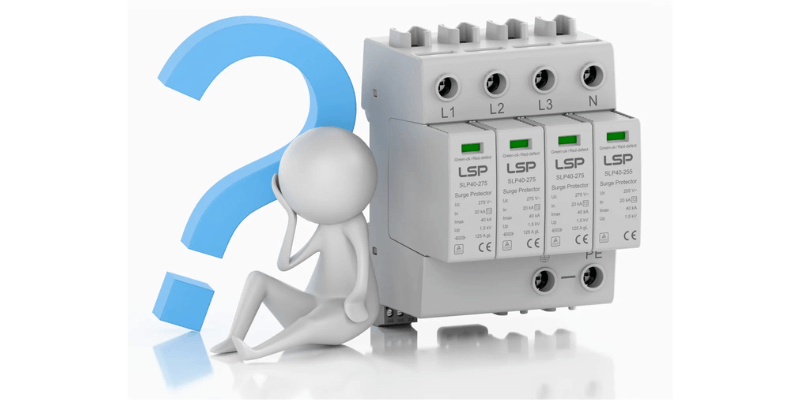Voltage spikes can seriously damage your sensitive electronics, yet many people still don’t fully understand them. So, what exactly are voltage spikes? What causes them, and how can you prevent them from damaging your circuits? Keep reading to find out more!
Kaj je napetostni skok?
A voltage spike, or transient, is a brief surge where voltage exceeds normal levels by three to thousands of times for milliseconds. This poses a risk to sensitive electronics, as it can cause erratic electron movement, damaging integrated circuits and components. Thus, preparation is essential; detecting spikes requires advanced electronics.
What Can Cause Voltage Spikes?
Voltage spikes can arise from various sources. Here’s the scoop:
From Outside:
- Lightning: A direct hit or nearby strike can send large jolts through power lines.
- Power Grid Hiccups: Malfunctions, distribution errors, or switching large capacitors can cause spikes.
- Switching Off Big Loads: Removing large loads from the grid, like during blackouts or appliance shutdowns, might lead to spikes.
From Inside:
- Switching Loads: Appliances like fridges and AC units turning on or off can cause voltage jumps.
- Wiring Issues: If high-voltage wires accidentally touch low-voltage ones, major spikes can occur.
- Internal Glitches: Problems inside transformers or other components might also lead to voltage surges.

What Is the Difference Between a Power Surge and a Spike?
Power surges and voltage spikes are distinct electrical phenomena affecting equipment differently.
The main difference lies in their duration: voltage spikes last 1-2 nanoseconds, while power surges last 3 nanoseconds or longer, sometimes for minutes. This affects how electrical systems respond.
Their causes also differ. Voltage spikes often result from events like lightning strikes or electrostatic discharge, while power surges stem from sustained imbalances in the power distribution system, such as utility malfunctions or large load switching.
In terms of voltage amplitude, spikes can reach tens of thousands of volts briefly, whereas surges measure hundreds of volts above normal but last longer.
For battery systems, voltage spikes can harm the battery management system (BMS) or monitoring circuitry, while power surges may cause overheating during charging, reducing battery lifespan and creating safety hazards.
How Do You Stop Voltage Spikes?
Suppressing voltage spikes requires special circuits. Electrical engineers implement spike suppression in nearly all circuits, including the power grid. But complete suppression is not always achievable, necessitating additional protection downstream.
Surge suppressors use diodes, inductors, and capacitors to absorb energy or direct it to ground. Their design depends on the circuit’s needs and the type of spike. For instance, a power grid surge suppressor for lightning strikes uses a large spark gap device, while an integrated circuit typically uses solid-state protection like Zener diodes or thyristors.
Surge protectors allow devices to function during surges but have a limited lifespan and can fail if overwhelmed. Many dedicated surge protectors feature indicators for reliability. It’s advisable to have an additional surge suppressor that signals its operation and can be installed in switchgears at grid connections or breaker panels.
Surge suppressors are often built into power cords but may also be integrated into electronics or breaker panels.

What Is Maximum Spike Voltage?
Some surges are more powerful, so it’s essential to understand the protection level for sensitive electronics. Maximum spike voltage indicates this protection.
When buying surge protectors, check the ratings for let-through voltage, clamping voltage, joules, and amperage. Higher joule and amp ratings are preferable; aim for lower clamping voltage to enhance device protection.
Do You Need Surge Suppression in DC Battery Circuits?
The answer depends on how you build and use your circuit. While DC circuits can experience voltage spikes like AC circuits, isolated battery DC circuits are less prone to them.
Many customers use our baterije in off-grid DC applications, where voltage spikes are minimal and generally do not damage the batteries or electronics.
However, proper electrical fuses are necessary to manage over-current.
Many DC electronics include built-in surge suppression. Concerns about voltage spikes from vehicle alternators have decreased because modern diode rectifiers now act as voltage suppressors.
For mission-critical circuits, adding low-voltage surge suppression is advisable. If your DC circuit connects with AC power for charging or conversion, such as plugging in RVs or boats, you need a surge protector. This applies whether using shore power, a generator, or creating AC from batteries and an inverter since these systems connect to unknown power sources. Therefore, using surge protectors is essential for portable applications due to varying circuit quality.

How to Deal With Voltage Spikes?
Voltage spikes can be damaging if you’re unprepared, but they’re easy to understand and avoid.
Whether caused by equipment failure or nature, protection is simple: use everyday surge protectors or suppressors. This knowledge helps keep your sensitive electronics safe for years.

